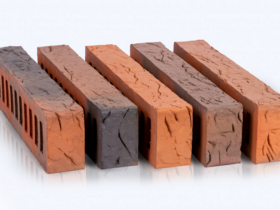This is performed in order to strengthen the bearing capacity of walls, piers and columns. Moreover, pieces and columns are necessary, even if this is not indicated in the project. The frames are installed in masonry according to the project but not less than four rows. The frames themselves can have a different configuration. These are nets and zigzags curved reinforcing rods.
The nets are made of reinforcement with a diameter of 4 mm, and curved from wire with a diameter of 8 mm. Since the thickness of the horizontal seam is on average 12 mm, and the seam should close the reinforcement by 4 mm, hence the thickness of the reinforcing cages – 8 mm is taken. Another very important point. Sigzag -shaped nets are installed perpendicular to each other and through at least four rows.
This must be done to dress rows. Dressing systems. It provides monolithic structure from separate layers of masonry. Carried out by dressing the seams. Distinguish horizontal, vertical and longitudinal. Longitudinal seams are tied with pinches rows of bricks, transverse – spoon. Now about types of dressing. One -row. In this case, the previous vertical seam is blocked by the subsequent row of bricks. This is done by using a quarter of brick. Here bricks shift for a quarter.
This dressing is also called chain. It is more intended for laying pillars and piers. In this case, the dressing is achieved by the fact that the rows overlap on half a brick, which significantly increases the rigidity of the structure. Many -row. With this system, the wall is placed in the same layers in six rows of brick. Thus, only every sixth row will be a poke and the next spoon.
Accordingly, the vertical parts of the longitudinal seams will be bandaged only by every sixth series. The whole charm of such a masonry is that compared to one -row, fewer bricks fit into the layouts. This significantly accelerates the masonry process, since it is much easier to do the zabutka.









